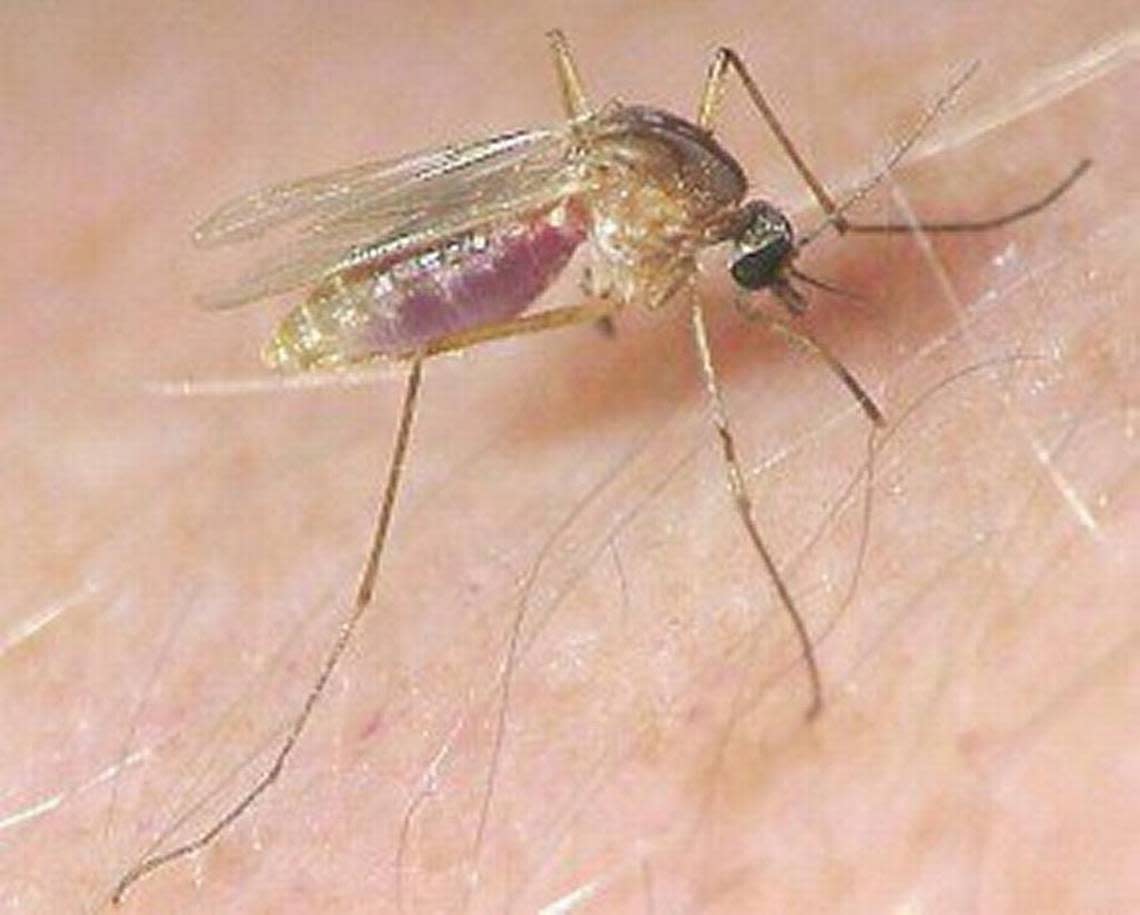Human cases of West Nile Virus confirmed in Fresno area. How to protect yourself
Fresno and the central San Joaquin Valley are still feeling the effects from a wetter-than-normal winter and spring, with an abundance of mosquitoes cavorting in the region.
And the little blood-suckers are more than just annoying. The increased mosquito population is also translating to an increase in infections from West Nile Virus, a disease that in rare instances can cause serious neurological conditions in people.
The Fresno County Department of Public Health has reported two human cases of West Nile Virus so far this year. And the county is among the leaders in the state in captured mosquito samples found to be carrying the virus. The county’s first mosquito samples found to be carrying the virus were reported July 19.
In an Aug. 7 letter to residents in a northwest Fresno area north of Herndon Avenue, the Fresno Mosquito and Vector Control District alerted households that “one or more cases of West Nile virus (WNV) have recently occurred in your neighborhood.”
“The risk of disease due to WNV usually increases at this time of year and is highest throughout the summer and early fall,” said Dr. Rais Vohra, Fresno County’s interim health officer. “The risk of serious illness to most people is low.”
“However, some individuals – less than one percent – can develop serious neurologic illnesses such as encephalitis or meningitis,” Vohra added. “Everyone should take this disease and mosquito-borne illnesses seriously. Please protect yourself and your families from mosquito bites.”

As of Friday, the California Department of Public Health reported that 97 mosquito samples collected by local mosquito abatement districts in Fresno County had tested positive for West Nile, the eighth most among California’s 58 counties. The 10 counties with the most positive mosquito samples to far this year are:
San Joaquin County: 406 positive samples.
Tulare County: 387 positive samples.
Yolo County: 245 positive samples.
Sacramento County: 225 positive samples.
Los Angeles County: 188 positive samples.
Stanislaus County: 155 positive samples.
Placer County: 144 positive samples.
Fresno County: 97 positive samples.
Madera County: 88 positive samples
Shasta County: 87 positive samples.
Madera County reported its first mosquito detection of West Nile on July 6, and one human case has been confirmed since that date. The first of Kings County’s mosquitoes with the virus were reported on July 11.
Tulare County detected its first West Nile-positive mosquitoes in late May, more than a month before nearby central San Joaquin Valley counties, and announced its first human case of West Nile this year on July 19.
Statewide, 26 confirmed human infections of West Nile Virus had been reported as of Friday, compared to 16 through this same period of 2022. The five-year average for the first 33 weeks of the year is 17.6 cases.
Mosquitoes typically get the virus by drawing blood from infected birds, and then their bite can transmit the virus to humans. The mosquito species most often associated with carrying West Nile are Culex tarsalis, or western encephalitis mosquito, and Culex pipiens or Culex quinquefasciatus, also known as the northern or southern house mosquitoes. The western encephalitis mosquito most often breeds in ponds, vegetated pools and agricultural areas, while the house mosquitoes can lay and hatch their eggs in ponds or drains, underground, in foul water and artificial containers in which water collects and becomes stagnant.
Both species are most active biters at dawn, dusk and after dark.
State and county health officials suggest that people can protect themselves from mosquito bites by using insect repellents containing DEET; avoiding going outside or wearing long sleeves, long pants and wearing mosquito repellent during the early morning and evening hours; ensuring windows have tight-fitting screens that are free from holes or tears, and getting rid of any sources of standing water around a house or property where mosquitoes can breed. Buckets, old car tires, birdbaths and pet bowls should be dumped or drained. Poorly maintained swimming pools are also a fertile breeding ground for mosquitoes.
People are also encouraged to report any dead birds – especially crows, jays, magpies, ravens, sparrows, finches and hawks – as part of the surveillance program for the disease. Dead birds can be reported online at westnile.ca.gov/report or by calling the state’s West Nile call center at 877-WNV-BIRD (877-968-2473). The call center can advise how to safely dispose of the bird or prepare it for pickup and testing.
According to the state Department of Public Health, about 80% of people who are infected with West Nile experience no symptoms and likely won’t be aware that they even had the virus. But about one out of five people infected may experience symptoms including fever, headache, body aches, nausea, vomiting or a skin rash, usually within three to 14 days of being bitten by an infected mosquito.
Fewer than 1% of people infected with the virus will suffer more severe illness in which the virus affects the brain or nervous system, causing encephalitis or meningitis – infections of the brain or surrounding tissues. Symptoms of those who become very sick may include high fever, headache, neck stiffness, vision loss, numbness, confusion, muscle weakness, paralysis and coma. The effects on the brain and nervous system can be permanent and, in some instances, fatal.
The people who are most at risk of getting sick or seriously ill from West Nile are those over the age of 60, as well as patients who have conditions including cancer, diabetes, high blood pressure and kidney disease. Those who have received organ transplants are also at higher risk.
More information on mosquito districts serving different parts of Fresno County is online at www.fresnocountymosquito.org/.
